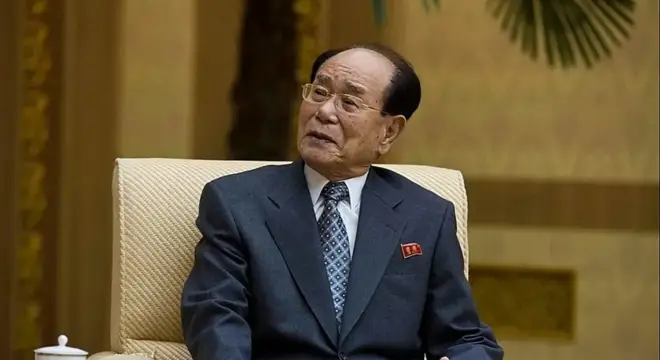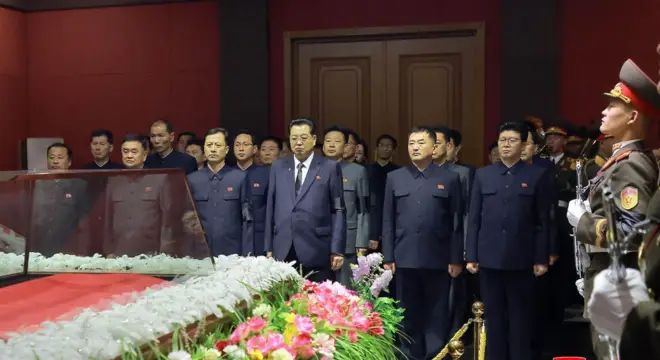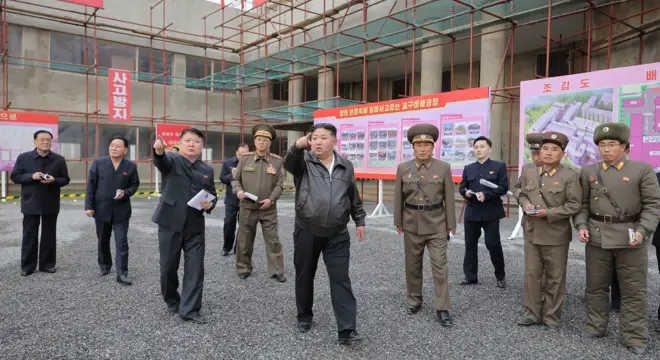Have you ever thought about how someone could hold a position of power for more than 50 years — particularly in a country like North Korea, where even the most powerful can just disappear into the night?
Well, today’s story is about a man who actually did that — Kim Yong-nam, the former head of state of North Korea. Kim Yong-nam death 2025 has once again sparked deep discussions about the secretive world of Kim Jong-un’s political elite and what it means for the country’s future.
But who really was Kim Yong-nam?
Was he just a ceremonial figurehead, or was he the quiet force shaping North Korea’s global image behind the scenes?
And perhaps most importantly — why is his passing being called the end of an era in the long, complex history of North Korean leadership?
Let’s start from the very beginning.

The Beginning — From Student to Statesman
Born in 1928 in Pyongyang, during Japan’s occupation of Korea, Kim Yong Nam came from a family described by state media as “patriotic revolutionaries.”
He studied at the Kim Il Sung University and later at Moscow State University, where he learned about international politics — a skill that would shape his long career ahead.
After the Korean War (1950–1953), he joined the Workers’ Party of Korea, the only political party that truly matters in the country. Slowly, step by step, he rose through the ranks — becoming one of the few who served under all three generations of North Korean rulers: Kim Il Sung, Kim Jong Il, and Kim Jong Un.
The Rise — Voice of the Regime
By the 1980s, Kim Yong Nam had already become an influential diplomat. In 1983, he was appointed Foreign Minister, a position that made him the face of North Korea’s diplomacy during the Cold War years.
When the Berlin Wall fell and the Soviet Union collapsed, many thought North Korea would crumble too. But Kim Yong Nam helped maintain the country’s limited diplomatic links with the outside world — especially with nations in Asia, Africa, and the Middle East.
In 1998, after the death of Kim Il Sung and the rise of Kim Jong Il, Kim Yong Nam was made the President of the Presidium of the Supreme People’s Assembly — basically the ceremonial head of state of North Korea.
While real power always stayed with the Kim family, he was the man who represented North Korea in front of the world.
He welcomed foreign leaders, gave those long, booming speeches filled with propaganda, and always stood firmly behind his country’s supreme leaders.
Loyalty That Outlived Generations
One of the most fascinating things about Kim Yong Nam’s biography is how he managed to survive — quietly, skillfully — in a system where loyalty is often rewarded one day and punished the next.
He lived through countless political purges, outlasted dozens of other senior officials, and never once was accused of disloyalty.
Analysts often called him “the perfect bureaucrat.”
Even when Kim Jong Un came to power in 2011 after his father’s death, Kim Yong Nam remained in his post — still visible at major parades and state functions, still delivering carefully worded speeches, still representing the country as its nominal head of state.
Diplomatic Moments — North Meets South
One of his most famous public appearances came in February 2018, when he led a high-level North Korean delegation to South Korea for the Pyeongchang Winter Olympics.
He attended the opening ceremony alongside Kim Yo Jong, the powerful sister of Kim Jong Un.
Can you imagine the scene?
Just a few feet away from them sat then U.S. Vice President Mike Pence — yet neither side exchanged a word.
Still, that moment was historic — because it marked one of the rare occasions North Korean officials appeared so openly on the world stage.
This visit helped spark a temporary thaw in relations, leading to the famous Kim Jong Un–Donald Trump summits in 2018 and 2019.
Kim Yong-nam Death 2025 — The End of an Era
On November 3, 2025, Kim Yong Nam passed away at the age of 97, reportedly from multiple organ failure.
The Korean Central News Agency (KCNA) confirmed his death, calling him “an old-generation revolutionary who left extraordinary achievements in the development of our party and country.”
A state funeral was announced for November 6, with Kim Jong Un personally visiting his bier to pay respects — a sign of how deeply respected Kim Yong Nam was within the regime.
His death in 2025 isn’t just the loss of one man; it symbolizes the fading away of North Korea’s revolutionary generation — those who had worked alongside the country’s founder, Kim Il Sung, and helped build the tightly controlled system we know today.

Official Funeral and International Condolences
According to the Korean Central News Agency (KCNA), top North Korean officials from the ruling party, government, and armed forces gathered at a funeral facility in Pyongyang to mourn Kim Yong-nam’s passing.
His body was laid in state, surrounded by wreaths including one sent by Kim Jong-un himself — a rare public gesture that highlighted Kim Yong-nam’s long-standing influence and respect within the regime.
Television footage showed Chinese Ambassador Wang Yajun and Vietnamese Ambassador Le Ba Vinh visiting the site to offer condolences, underscoring Kim Yong-nam’s diplomatic legacy and his long-standing ties with socialist allies.
The state funeral began a day after his death, and Kim Jong-un personally visited his bier early Tuesday morning to express “deep condolences.”
Kim Yong-nam’s coffin departed the hall on Wednesday, marking the end of a life dedicated entirely to the North Korean state.
Legacy — A Life of Absolute Loyalty
Throughout his career, Kim Yong Nam was the perfect example of how to survive in the world’s most secretive political system.
He had no controversies, no scandals, no signs of disobedience.
He spoke only when needed — and always in the regime’s voice.
From reading the elegy at Kim Il Sung’s funeral in 1994, to nominating Kim Jong Il as chairman of the National Defense Commission, he was always at the center of key state rituals.
In fact, experts say that Kim Yong Nam may have been the only top official in North Korean history who was never purged — a remarkable feat in a country where loyalty is tested constantly.
Even in death, the outpouring of official mourning — including condolences from China and Vietnam — reflected the quiet power he held as a bridge between North Korea’s revolutionary past and its modern-day politics
What Does His Death Mean for North Korea’s Politics in 2025?
Now here’s the big question: What happens next?
With the passing of Kim Yong Nam, the old guard of North Korean politics is almost gone.
Younger, more aggressive leaders like Choe Ryong Hae now dominate the Supreme People’s Assembly, and Kim Jong Un holds unchallenged power.
This could mean a new chapter — perhaps even more centralized control, as the symbolic balance figures like Kim Yong Nam once provided have vanished.
Some analysts say his death marks the final end of the “revolutionary generation” that tied modern North Korea to its founding ideals.
Conclusion
Kim Yong Nam’s funeral was more than just a farewell ceremony.
It was the closing of a long chapter in North Korea’s leadership history — a reminder of how deeply one man’s loyalty can shape a nation’s image for decades.
He may not have ruled the country, but he represented it — quietly, faithfully, and consistently for over 70 years.
And now, with his passing, North Korea’s political landscape in 2025 looks a little different — younger, sharper, and more uncertain than ever before.

